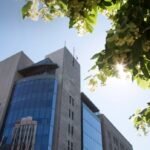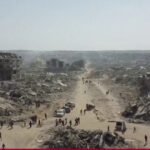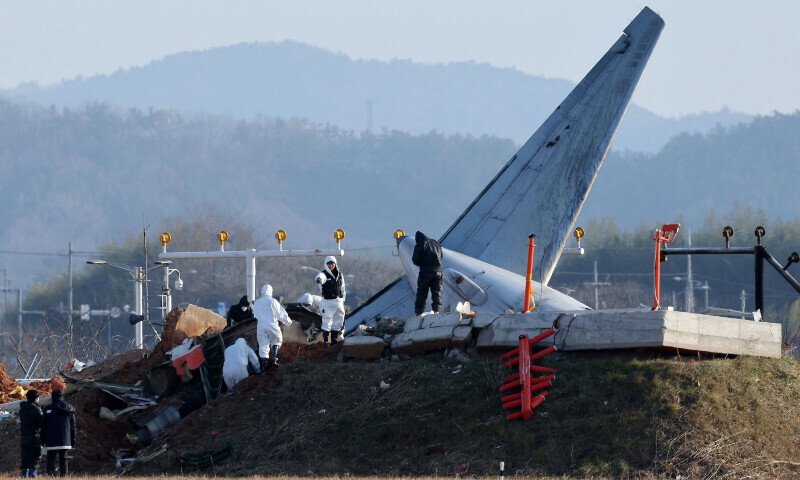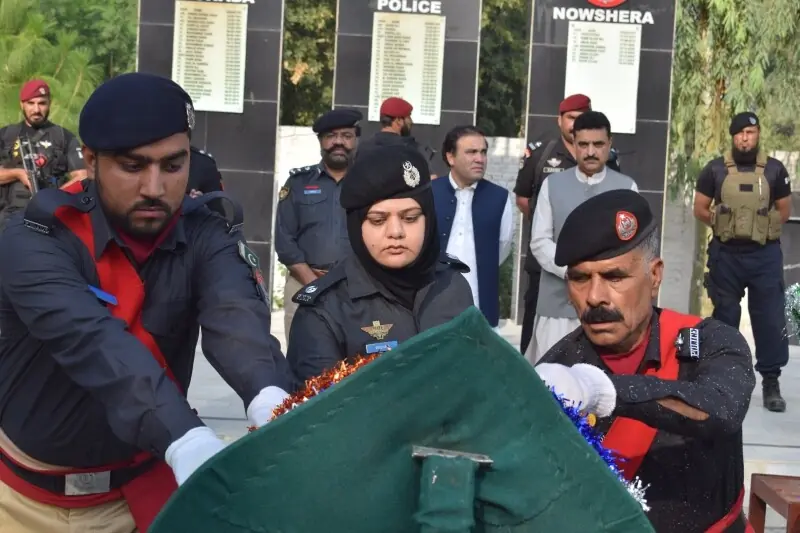South Korean investigators probing the Jeju Air crash that killed 179 people in the worst aviation disaster on their territory said Wednesday they will send one of the recovered black boxes to the United States for analysis.
The plane was carrying 181 people from Thailand on Sunday when it issued a distress call and landed upside down before hitting a barrier and bursting into flames, killing everyone on board except two flight attendants rescued from the burning wreckage.
South Korean and American investigators, including those from Boeing, have been combing the crash site southwest of Muan since Sunday’s disaster.
“The damaged flight data recorder has been deemed unrecoverable for domestic data extraction,” said South Korea’s vice minister of civil aviation, Joo Jong-wan.
“Today it was agreed to transport it to the United States for analysis in collaboration with the National Transportation Safety Board of the United States.” Joo previously said the plane’s two black boxes were recovered and the cockpit voice recorder “initial extraction has already been completed.”
“Based on this preliminary data, we plan to begin converting it to audio format,” he said, meaning researchers could listen to the pilots’ final communications.
The second black box, the flight data recorder, “was missing a connector,” Joo said.
“Experts are currently conducting a final review to determine how to extract data from it.”
Authorities initially pointed to a bird strike as a possible cause of the disaster, but have since said the probe was also examining a concrete barrier at the end of the runway, dramatic video of which showed the Boeing 737-800 crashing before exploding into flames .
They also said a special inspection of all Boeing 737-800 models operated by local airlines was examining their landing gear after questions about a possible mechanical failure in the crash.
The ongoing inspections “mainly focus on the landing gear, which in this case was not deployed correctly,” said director general of aviation safety policy Yoo Kyeong-soo.
Local media reported that the landing gear had deployed correctly on Jeju Air Flight 2216’s first failed landing attempt at Muan Airport before failing on the second.
The issue “will likely be examined by the Accident Investigation Board through a thorough review of various testimony and evidence during the investigation process,” the Ministry of Land, which oversees civil aviation, said in a briefing.
All victims identified
At Muan airport, the victims’ grieving families became increasingly frustrated by delays in the identification and release of the bodies.
Authorities have said the bodies were severely damaged by the crash, making the job of identifying remains slow and immensely difficult, even as investigators had to preserve evidence from the crash site.
But the country’s acting president, Choi Sang-mok, who has been in office for less than a week, said on Wednesday that the process had finally been completed and more bodies had been handed over to relatives so they could hold funerals.
“Our investigators, together with the US National Transportation Safety Board and the manufacturer, are conducting a joint investigation into the cause of the accident,” Choi said at a disaster response meeting on Wednesday.
“A thorough analysis and review of the aircraft structure and black box data will reveal the cause of the accident,” Choi added.
American investigators arrived on Monday and headed straight to Muan, and the initial joint investigation at the site focused on a navigation system known as a localizer that assists in plane landings.
The locator, installed in a concrete structure at Muan International Airport, is the barrier blamed for exacerbating the severity of the Jeju plane crash.
The plane was mainly carrying tourists returning from their New Year’s trips to Bangkok, and all the passengers were Korean nationals, except for two Thais.
A more complete account of what went wrong in the final moments of the flight is expected once authorities have analyzed the black boxes.
Altars have been erected in memory of the victims across the country, including in Seoul and at Muan airport.









